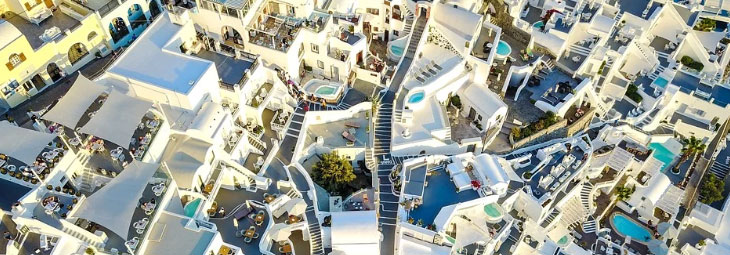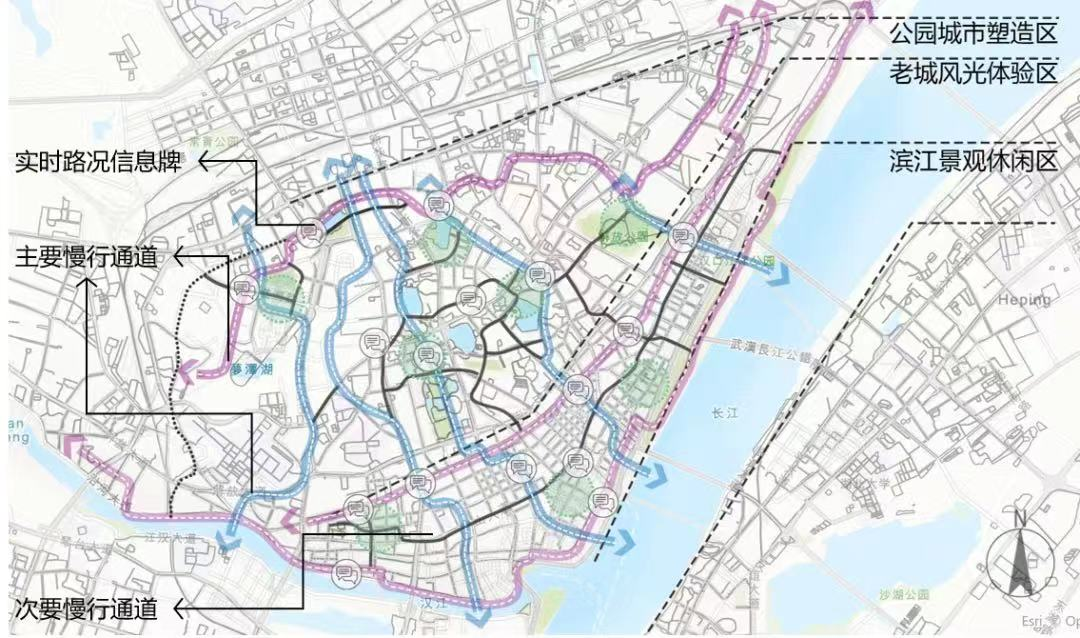



Author: Liu Peng, Zhang Ning
Huazhong University of Science and Technology
Abstract
With the arrival of the era of high-quality development, the importance of "people-oriented" has become more prominent in the development of urban space. As the most basic travel space for people, the practice path of slow-transportation system has been widely concerned. At present, the practice of slow system planning mainly focuses on people's travel needs and ignores the characteristics of physical spaces, which leads to the poor effect of slow-transportation system planning. This paper explores the characteristics of urban physical spaces from three aspects: building a "traffic fence", identifying the comfort and convenience of street spaces, and the structures, then combining the existing ecological environment elements in the study area to build a slow-transportation system based on urban physical space characteristics, which enriches the path of city slow traffic system planning practice.
1. Research background
In the process of rapid urbanization, the urban spatial texture of "vehicle -oriented" and "rapid" has been formed. On the one hand, the urban diseases are prominent like enhanced heat island effect, rising carbon emissions, and traffic congestion; On the other hand, the tense and fast-paced urban lifestyle and large-scale urban roads make urban life less liveable and street spaces less vital. Based on the circumstances of high-quality development, the idea of urban spatial development has changed from incremental expansion in the past to stock upgrading. Fining urban stock space and improving the quality of liveability have become the main purpose of urban space development at present.
The report of the 19th National Congress pointed out that In addition to creating more material and cultural wealth to meet people’s ever-increasing needs for a better life, we need also to provide more quality ecological goods to meet people’s ever-growing demands for a beautiful environment. The development concepts of "ecological civilization" and "people-centered" have become the main theme of the development of the new era. Slow transport is the most basic way for people to travel, and building a high-quality city slow traffic system is one of the basic ends of the "people-oriented" urban development concept. Slow-moving space covers human activities such as travelling and entertaining, and it is the "third space" with the most human activities after living spaces and working spaces. At present, it has become the mainstream view in this field to guide the practice of slow-moving system planning based on people's travelling needs. Although the practice of slow-transportation system based on people's travelling demands fully embodies the concept of "people-oriented" urban construction, it ignores the influence of urban physical space characteristics on the practice of slow-transportation system, which causes a lack of slow-transportation system planning to some extent.
2.The development of slow traffic system and its problems in planning
Slow traffic, relative to fast and high-speed traffic, can sometimes be called non-motorized traffic, which is mainly composed of pedestrian and non-motorized traffic. Slow traffic system is a linear space specially used to carry slow traffic and is an important part of urban road traffic system. With the development of society and people's attention on the physical living environment, the slow-moving system is more than simply meeting the needs of slow-moving traffic. Slow traffic means a vivid city. When the traffic slows down, the activity and participation of residents will make the urban life more vivid. Therefore, the construction of slow-moving space nodes, the improvement of slow transportation street quality, and the diversification of slow transportation space functions become the focus of slow transportation system practice.
The planning practice related to slow traffic system started earlier in foreign countries, which can be mainly divided into three types: first, vigorously develop non-motor vehicle traffic to prioritize on slow transportation, and build a perfect bicycle support system through non-motor vehicle roads as well as supporting facilities planning and policy management guarantee, such as Copenhagen and Amsterdam. Second, relying on efficient and developed public transport stations, build a "walking, biking, and buses " green transport system, such as major cities in Japan and Germany. Third, with the prevalence of New Urbanism, neighborhood units are used as the space carrier to build a slow traffic system, and through detailed street design guidelines, multiple, vivid, and safe pedestrian paths are provided, thus providing high-quality slow traffic spaces for residents. This type is mainly existed in American cities. In 2002, the White Paper on Urban Traffic in Shanghai clarified the concept of slow traffic for the first time in China. Subsequently, Hangzhou, Beijing, Chengdu ,and other cities made slow transportation system planning practices on the basis of learning from foreign slow traffic development experiences. Hangzhou has planned a "59-horizontal and 66-vertical" corridor network from different levels through "Public Bicycle Traffic Planning" and "Wulin Area Slow Traffic Planning", and divided the non-motor vehicle lane network into four levels: corridor, distribution road, connecting road, and leisure road, which has promoted the development of public bicycles. The Action Plan for Comprehensive Traffic Management in Beijing in 2020 constructed a slow traffic planning scheme from municipal and district levels, and plans to build bicycle lanes in urban concentrated residential areas such as Huilongguan and along the Tonghui River, and implements the development concept of "slow traffic first"; Based on the concept of Garden City, Chengdu Slow Transportation System Planning combines the urban greenway system with city slow transportation system, unifies the improvement of urban environmental quality and the practice of slow traffic system, and puts forward a better practical direction for the construction of city slow traffic system.
In general, China's slow transportation system planning has formed a practical model combining construction guidelines at the level of urban Master Plan and specific planning for slow transportation systems in key urban areas (historical districts, commercial districts, waterfront greenways, and urban parks), but the construction of slow transportation systems in China has not yet attracted sufficient attention, and the problems of mixed pedestrian and vehicular traffic, mutual interference and uneven right-of-way in many cities are still serious, and the planning of slow traffic systems is still in its infancy. The practice is at the starting point in China.
Source: < https://mp.weixin.qq.com/s/qWShu17qypW0r0oEpUgkvg >
Translated by Zhang Chenxi